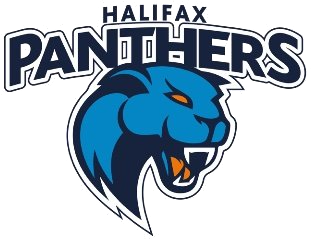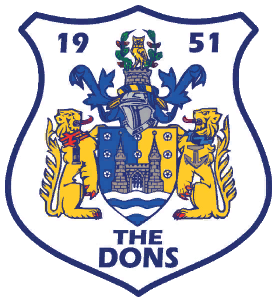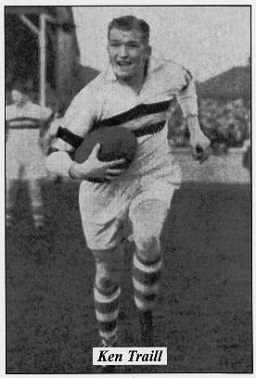Related Research Articles

The Halifax Panthers are a professional rugby league club in Halifax, West Yorkshire, England. They play home games at The Shay and compete in the Championship, the second tier of British rugby league.

The Rochdale Hornets are a professional rugby league club from Rochdale, Greater Manchester, England, competing in the League 1, the third tier of European rugby league. The Rochdale Hornets are one of the original twenty-two rugby clubs that formed the Northern Rugby Football Union in 1895, making them one of the world's first rugby league clubs. Their main local rivals are Oldham, Salford Red Devils, Swinton Lions, Halifax and the Huddersfield Giants.

Doncaster Rugby League Football Club is a professional rugby league football club, based in Doncaster, South Yorkshire, England. They play home games at the Keepmoat Stadium and currently compete in the Championship, the second tier of British rugby league.

George Nēpia was a New Zealand Māori rugby union and rugby league player. He is remembered as an exceptional full-back and one of the most famous Māori rugby players. He was inducted into the New Zealand Sports Hall of Fame in 1990. In 2004 he was selected as number 65 by the panel of the New Zealand's Top 100 History Makers television show. Nēpia was featured in a set of postage stamps from the New Zealand post office in 1990. Historian Philippa Mein Smith described him as "New Zealand rugby's first superstar".
Liverpool Stanley was a semi-professional rugby league club from Liverpool, England. It was renamed Liverpool City in 1951, but was otherwise unrelated to the original Liverpool club of the same name. The club's origins date back to 1880 when it was founded as Wigan Highfield. Although the club was best known for its years in Liverpool, the club relocated numerous times, and were known as London Highfield, Huyton, Runcorn Highfield, Highfield, and eventually Prescot Panthers throughout their existence before being eventually wound up in 1996.

Kenneth Traill was an English professional rugby league footballer who played in the 1940s and 1950s, and coached in the 1950s, 1960s and 1970s. He played at representative level for Great Britain, England and Yorkshire, and at club level for Hunslet, Bradford Northern, Halifax and Wakefield Trinity, as a loose forward, and coached at club level for Wakefield Trinity.
David "Dai" Jenkins initially played Rugby Union. He changed codes when he was 21 and played Rugby League between 1935-1957, mainly for Leeds Rugby League Club as a scrum-half.
Mansfield Marksman was a rugby league team based at various times in Mansfield, Kirkby-in-Ashfield, Alfreton and ultimately Nottingham. The club changed its name to Nottingham City in 1989, and folded in 1994 a year after exiting the Rugby Football League.
The 1935–36 Rugby Football League season was the 41st season of rugby league football. Thirty teams competed in a single league Championship. The Challenge Cup was contested for the 36th time and the second European Championship took place.
The 1936–37 Rugby Football League season was the 42nd season of rugby league football.
Acton and Willesden RLFC was a professional rugby league team based at Acton Park Royal in London. Along with Streatham and Mitcham R.L.F.C., the club was an early attempt to establish rugby league in London during the 1930s.
Cornelius "Con" Denis Murphy was a Welsh dual-code international rugby union, and professional rugby league footballer who played in the 1930s and 1940s. He played representative level rugby union (RU) for Wales, and at club level for Ynysddu RFC and Cross Keys RFC, as a hooker, and representative level rugby league (RL) for Wales, and at club level for Acton and Willesden, Streatham and Mitcham and Leeds, as a hooker,.
Kenneth Henry Davies was a Welsh rugby union footballer and professional rugby league footballer. He played at club level for Blaengarw RFC, Bridgend RFC and Keighley RLFC in the 1930s, 1940s and 1950s as a stand-off. He formed a formidable partnership with Thomas Cockcroft at scrum-half.
The 1927–28 Yorkshire Cup tournament was the 20th occasion on which the competition had been held. Dewsbury won the trophy by beating Hull F.C. in the final by the score of 8–2. The match was played at Headingley, Leeds, now in West Yorkshire. The attendance was 21,700 and receipts were £1,466. This was Dewsbury's second triumph in a three-year period having last won the trophy in 1925–26.
1935–36 Yorkshire Cup
The Yorkshire Cup competition was a knock-out competition between rugby league clubs from the county of Yorkshire. The actual area was at times increased to encompass other teams from outside the county such Mansfield, Coventry, this season's appearance of Newcastle, and even last year's appearance of London (in the form of Acton & Willesden. The competition always took place early in the season, in the Autumn, with the final taking place in December
The 1937–38 Yorkshire Cup was the thirtieth occasion on which the Yorkshire Cup competition had been held.
The 1940–41 Yorkshire Cup was held in spring 1941.
The 1951–52 Yorkshire Cup was the forty-fourth occasion on which rugby league's Yorkshire Cup competition was held. Wakefield Trinity won the trophy by beating Keighley in the final.
Mitcham Stadium was a multi use sports stadium in Mitcham, London. Uses included rugby league, athletics and greyhound racing. The stadium is not to be confused with the former Sandy Lane ground owned by Tooting and Mitcham FC, which was sited nearby.
References
- ↑ "W2W | Fashion Shop Site". Archived from the original on 2011-10-07. Retrieved 2010-04-26.
- 1 2 3 4 Delaney, Trevor (1991). The Grounds Of Rugby League. Keighley: Trevor R. Delaney. ISBN 0-9509-9822-2.
- ↑ "RL1908 - profile of George Nepia". Archived from the original on 2010-04-17. Retrieved 2010-04-26.